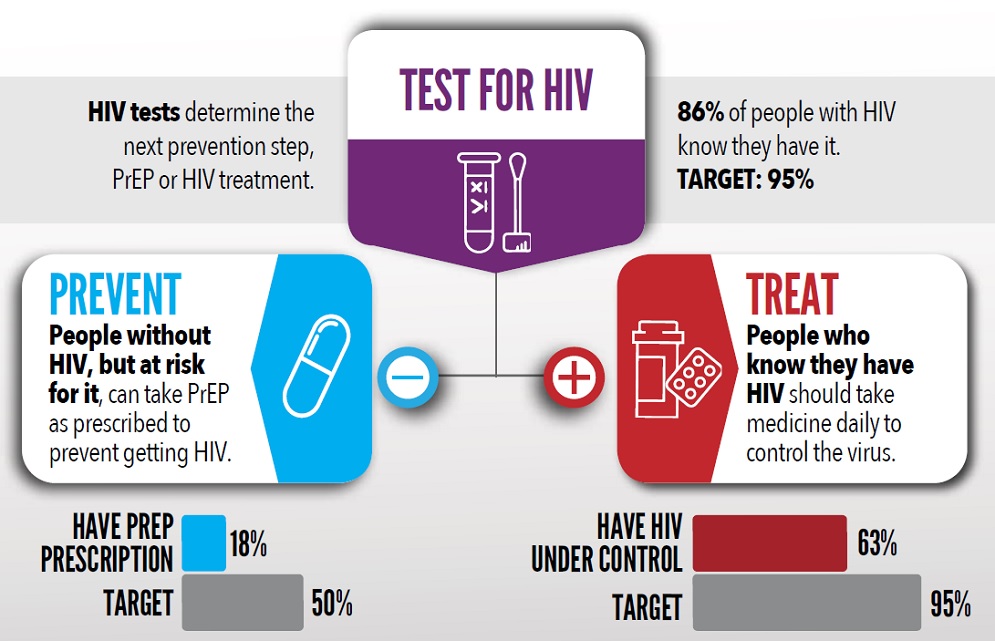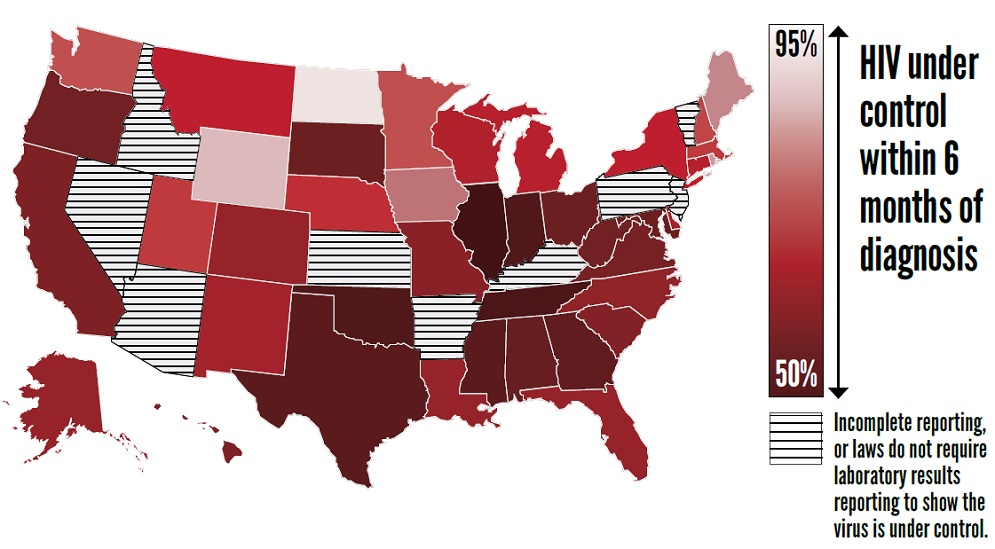Ending HIV Transmission






Overview
About 38,000 new HIV infections still occur each year. The US Government recently proposed Ending the HIV Epidemic: A Plan for America to reduce HIV transmission. The goal is to reduce new HIV infections by 90% by 2030. To end transmissions, people should first get tested for HIV so everyone knows whether or not they have it. People with HIV should take HIV medicine every day to control the virus, stay healthy, and have effectively no risk of sexual transmission. People without HIV, but at high risk for it, can take a medicine called PrEP to prevent them from getting HIV from sex when taken as prescribed.
* HIV that is under control or undetectable has less than 200 copies of HIV per milliliter of blood.
† Pre-exposure Prophylaxis, or PrEP, is an oral pill for people at very high risk for getting HIV. When used as prescribed, PrEP can prevent HIV.
Key actions to help end the HIV epidemic§

§ The 4th pillar of Ending the HIV Epidemic, Respond, is not a part of these Vital Signs data.
SOURCE: MMWR December 2019
Too few people have their HIV under control within 6 months of diagnosis
Progress has Stalled:
- In 2017, too few people with HIV, especially those ages 13-24 years, got the HIV medical care or medicine they need every day to control the virus.
- Many infections (about 4 of 10) came from people who didn’t know they had HIV in 2016.
- Another 6 in 10 infections in 2016 came from people who knew they had HIV, but were not getting HIV medical care or taking medicine consistently to control the virus.
- PrEP wasn’t prescribed to enough of the 1.2 million people who could benefit from it in 2018, especially young people and racial/ethnic minorities. PrEP coverage for whites is 4 to 7 times as high as for Latinos and blacks.
Healthcare Providers Can:
- Test all patients for HIV at least once in their lives.
- Test people at high risk for HIV at least once a year. Gay and bisexual men may benefit from more frequent testing (every 3 to 6 months).
- Initiate HIV treatment as soon as possible after diagnosis.
- Prescribe PrEP to all patients who could benefit from it. Learn more at https://www.cdc.gov/hivnexus/hcp/index.html.
Health Departments Can:
- Expand HIV testing including use of self-test kits.
- Find people who fall out of HIV care, and help them get back in care.
- Raise awareness about PrEP and train health care providers in how and when to prescribe it.
Everyone Can:
- Get tested for HIV. Find where you can get tested at https://locator.hiv.gov/.
- Talk with your healthcare provider about HIV prevention including PrEP.
- Stay healthy by taking your medicine as prescribed if you have HIV or are on PrEP.

Ending the HIV Epidemic: A Plan for America would leverage critical scientific advances in HIV testing, treatment, prevention, and response, by coordinating highly successful programs and resources of the US Department of Health and Human Services (HHS) agencies and offices. Ending the HIV Epidemic would first focus on geographic areas that are hardest hit by HIV to achieve the most impact. The intent is to expand nationally within 10 years.
Related Pages and Resources
- Vital Signs: Status of Human Immunodeficiency Virus Testing, Viral Suppression, and HIV Preexposure Prophylaxis — United States, Morbidity and Mortality Weekly Report (MMWR)
- Get Tested for HIV
- HIV Treatment as Prevention
- Pre-exposure Prophylaxis (PrEP)
- HIV Nexus: Information for Healthcare Providers
- CDC’s Role in Ending the HIV Epidemic
- Explore the Data: NCHHSTP AtlasPlus
- Guidelines and Recommendations
- Let’s Stop HIV Together Campaigns
Science Behind the Issue
For More Information
1-800-CDC-INFO (232-4636)
TTY: 1-888-232-6348
Web: www.cdc.gov
Centers for Disease Control and Prevention
1600 Clifton Road NE
Atlanta, GA 30333
Publication date: December 3, 2019
